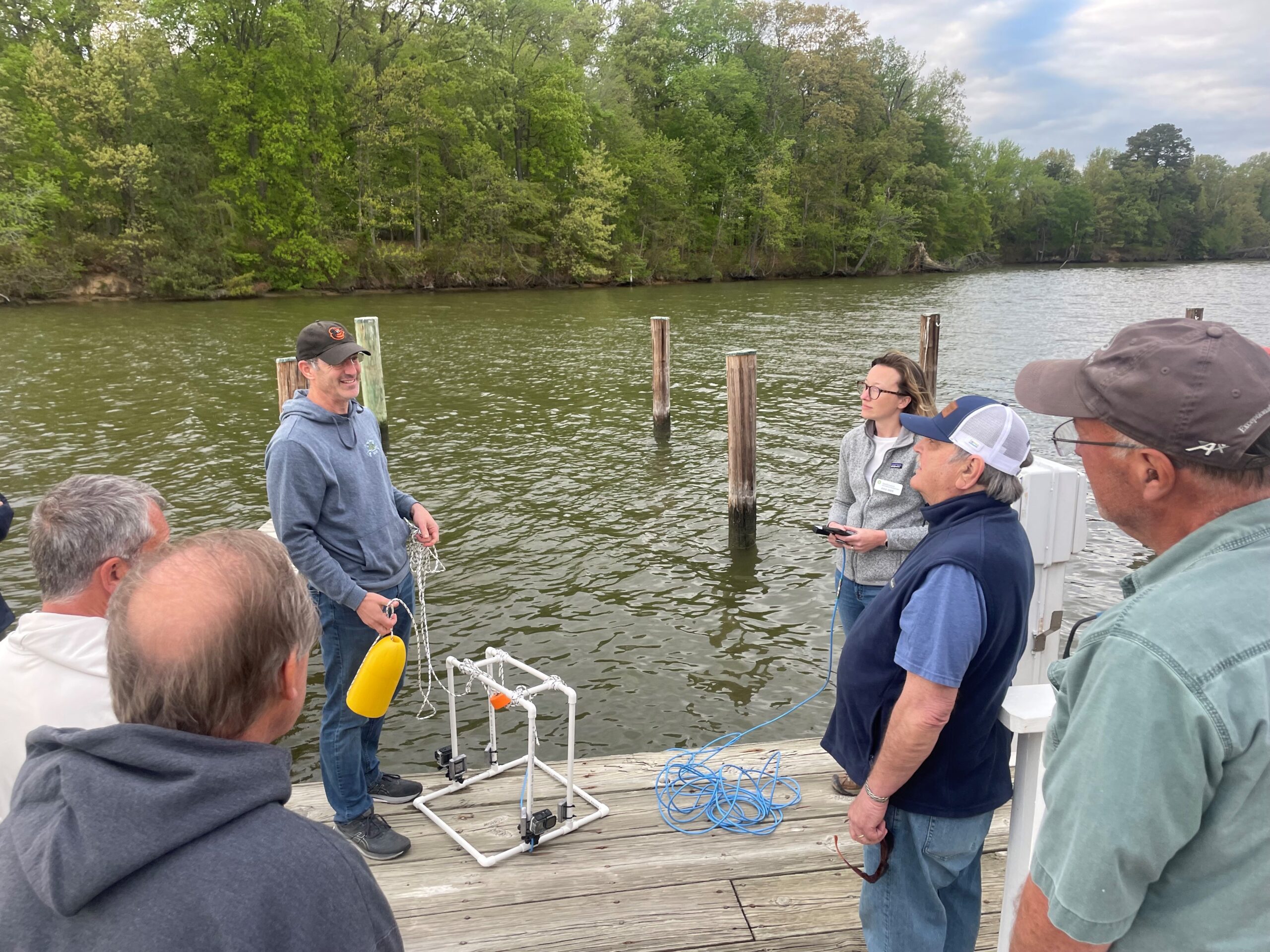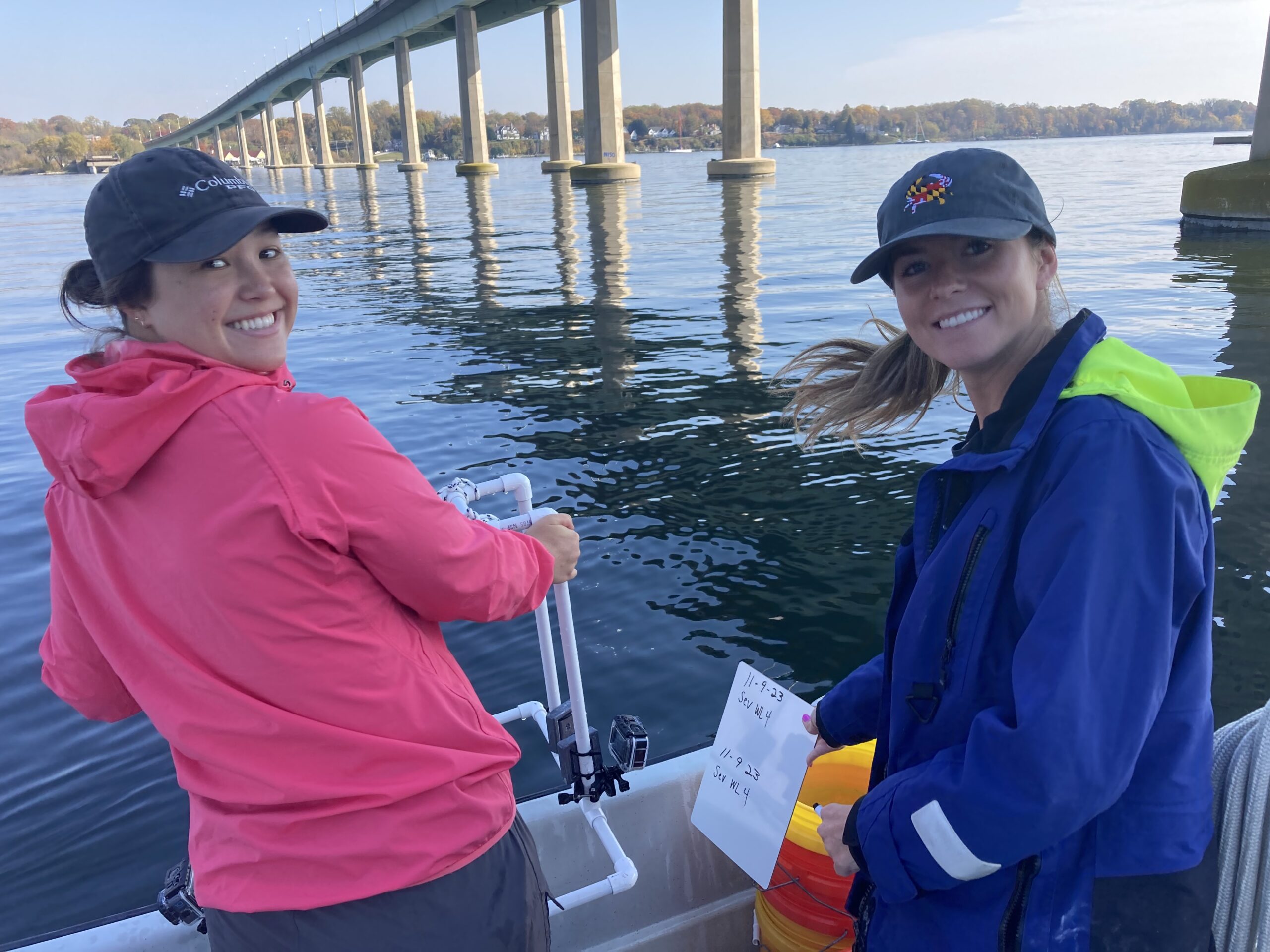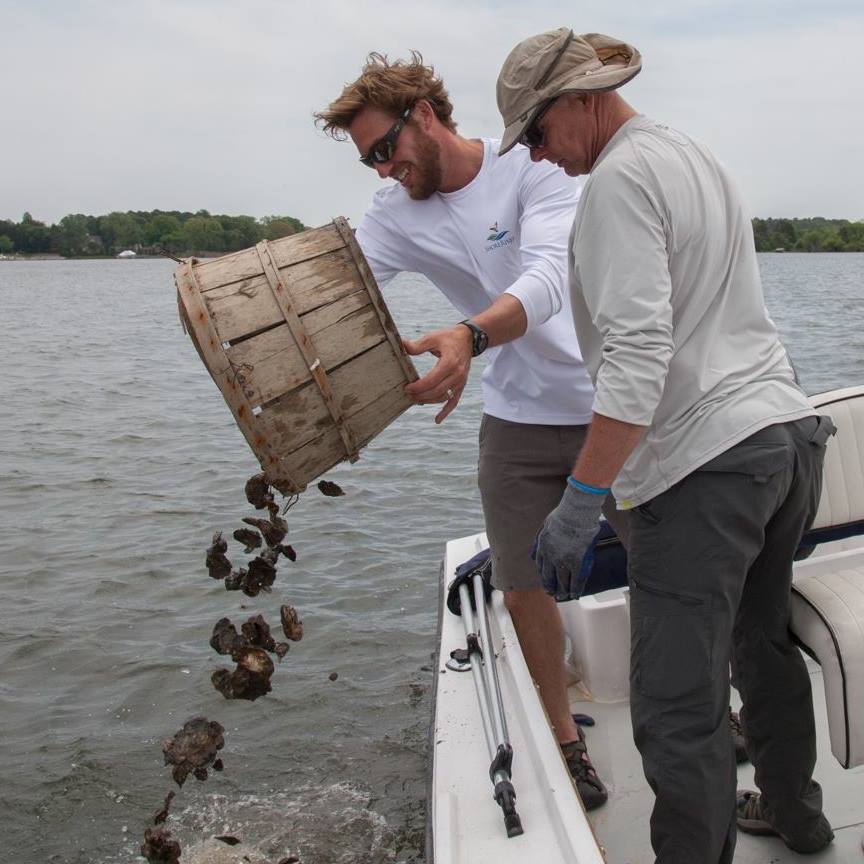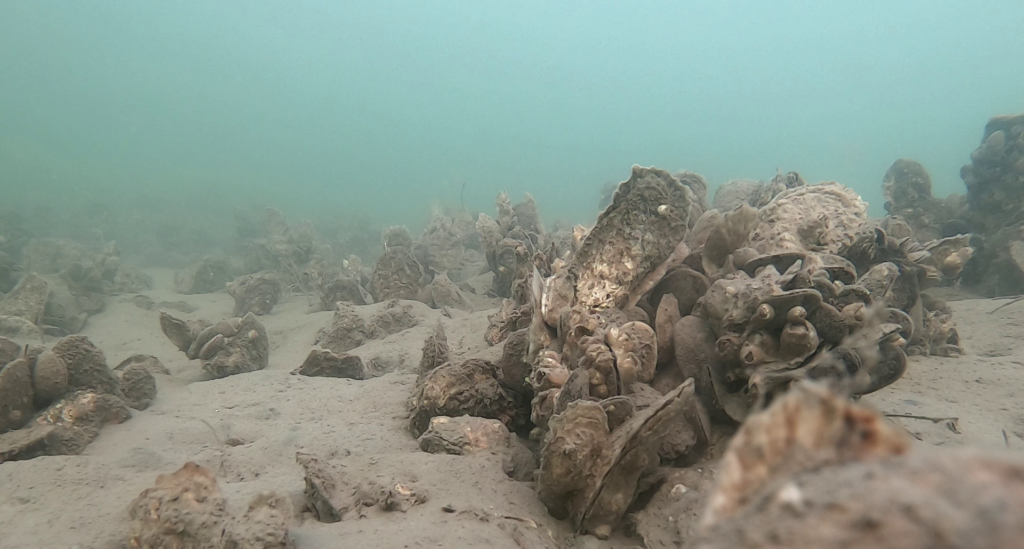by Kristen Goodhue
In Maryland, two things mark the return of spring more than any other: boating and blue crab season. Oyster season—a cold-weather enterprise—closes March 31. But this year, like last year, dozens of volunteers are taking their boats to local oyster reefs—not to harvest them, but to check the health of Maryland’s oyster restorations.
It’s part of a new participatory science project at the Smithsonian Environmental Research Center called “Oyster Cam.” The project trains watershed organizations and their volunteers to deploy underwater cameras, collecting videos of oyster reefs across the state.
Maryland has been working to restore its oysters since the early 2000s. Once so plentiful their reefs almost touched the water’s surface, overharvesting and disease have whittled the Chesapeake’s oysters down to 1 to 2% of historic levels. Over the last decade, the state has planted nearly 7 billion baby oysters in Chesapeake rivers. The largest sanctuary, in Harris Creek, is roughly the size of the National Mall.
However, creating oyster restorations is only half the picture. Regular check-ups to see how the reefs are doing are equally important. And that, explained Anna Davis, can be expensive and time consuming.
“It requires folks who are essentially skilled divers to go down onto these reefs to collect oysters,” she said.

Davis, a SERC postdoc, runs the Oyster Cam project with SERC’s Fisheries Conservation Lab. Their biologists devised a less pricey method in 2021 that involved lowering a GoPro camera into the water—allowing them to cover five or six times more sites than a diver could in the same time period. The images also provide a snapshot of the restored reefs, allowing scientists to assess their health.
The lab’s head, Matt Ogburn, had the idea to share the technique with river organizations. Davis organized volunteer trainings and helped coordinate the sites volunteers would visit.
During the first year, funded by the Chesapeake Bay Trust, Oyster Cam worked with four Maryland river stewardship organizations: Severn River Association, ShoreRivers, Arundel Rivers Federation and Advocates for Herring Bay.
“We’re heavily involved in oyster restoration in the Severn River,” said Tom Guay, program officer with the Severn River Association. “Anything that could help us understand the oysters and their predicament, whether they’re doing well or not, we’re always going to be interested in that.”

The association hopes to grow 1.3 billion mature oysters in the Severn. “It’s an ambitious target,” Guay said, “but we’ve been having success. And so far, most of the spat on shell we plant are surviving their first year on the reefs.” They began partnering with Operation Build-A-Reef Program in 2018 and have planted 25 million baby oysters every year since, missing only one year during the pandemic.
On Maryland’s Eastern Shore, Choptank Riverkeeper Matt Pluta works on oyster restorations with the ShoreRivers organization. ShoreRivers has recruited dozens of volunteers to grow oysters off their own docks, as part of the Maryland Grow Oysters program. ShoreRivers then plants those oysters in 10 restoration sites along the Eastern Shore. But while some restoration reefs have existed for nearly a decade, Oyster Cam offered many volunteers the first chance to see the fruits of their work.
“Up until now, we haven’t been able to show folks what their efforts have resulted in,” Pluta said. “This was a great community engagement and volunteer appreciation to say, you’re work isn’t going unnoticed.”

The biggest snag, according to Davis? Timing.
“In the summertime, when folks would want to be on boats, it’s really hard to see anything underwater,” Davis said. She encourages volunteers to go out in late spring or mid-fall, when the Bay is usually clearer.
Now in year two, Oyster Cam has added three states to its Eastern oyster work: Virginia, New York and Florida. They’re also helping SERC’s San Francisco biologists track the imperiled Olympia oyster, California’s only native oyster. The expansion is thanks to funding from the Smithsonian’s Life on a Sustainable Planet Initiative.
Once the surveys are done, volunteers send their footage to SERC. SERC then uploads still images from the videos to Zooniverse, an online platform for volunteer science projects. Davis hopes to bring Oyster Cam to classrooms soon. With a little more pilot testing, K-12 students could analyze oyster reef images and give them health scores. Next-generation oysters, meet next-generation scientists.
More Oyster Stories from the Smithsonian
For Bay Oysters, Protection Plus Restoration Creates Healthiest Reefs
Oysters and the Chesapeake’s Jellyfish Wars
When the Going Gets Tough, Baby Oysters Get Growing
Stressed-Out Young Oysters May Grow Less Meat on Their Shells
Why 900 Years of Ancient Oysters Went Missing


